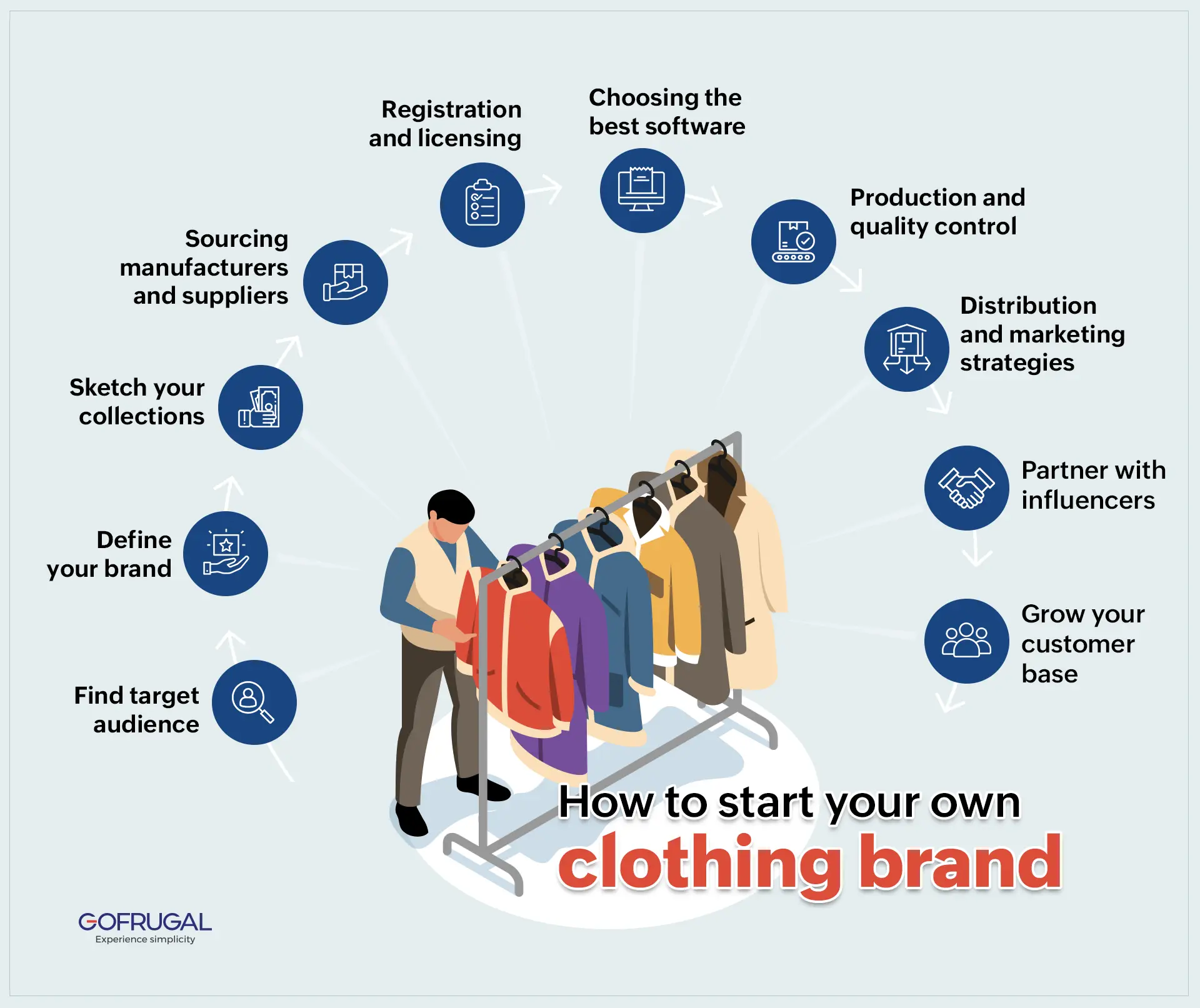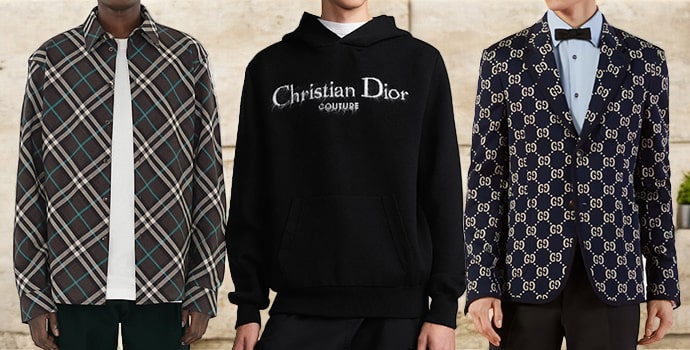The Value of Lasting Clothes: Just How It Impacts the Atmosphere and Your Closet
Lasting clothes is increasingly recognized for its vital duty in decreasing the environmental impact of the rapid fashion business. By concentrating on green products and moral manufacturing approaches, it addresses pushing eco-friendly worries. This shift not only benefits the world yet additionally affects consumer selections, causing a more thoughtful technique to wardrobe administration. Recognizing these dynamics elevates crucial questions concerning fashion's future and individual responsibility in forming it.
The Ecological Footprint of Rapid Style

Benefits of Lasting Materials
Sustainable products supply considerable advantages, especially via green textile selections that reduce ecological damage. These products also show toughness and longevity, minimizing the need for frequent substitutes. Therefore, they add to a much more sustainable apparel industry and advertise accountable customer actions.
Eco-Friendly Textile Choices
While the fashion business has actually long been connected with rapid trends and ecological damage, the surge of environmentally friendly material choices offers a transformative possibility. Lasting materials such as organic cotton, hemp, and Tencel have gained appeal because of their reduced environmental impact. These fabrics are usually generated without harmful pesticides and require much less water, decreasing their carbon footprint - Branded Clothing. Additionally, lots of eco-friendly textiles are eco-friendly, adding to a round economic situation by reducing waste. Picking lasting products not just sustains eco accountable methods but likewise advertises much healthier ecological communities. As consumers become more knowledgeable about their purchasing power, the need for green materials urges brand names to introduce and adopt more lasting manufacturing approaches, ultimately benefiting the earth and future generations
Sturdiness and Longevity Benefits
Several customers are increasingly acknowledging the longevity and durability benefits of sustainable materials in their clothing choices. Unlike conventional textiles, sustainable products such as natural cotton, hemp, and recycled polyester are crafted to withstand wear and tear, causing garments that last much longer. This reduced regularity of substitute not only saves consumers money with time yet likewise decreases waste produced by fast style. In addition, sustainable garments usually employs environment-friendly manufacturing methods that improve material strength, contributing to a decrease in the overall carbon impact. By buying durable garments, customers can cultivate a more lasting closet while appreciating premium pieces that preserve their aesthetic and functionality over time. Consequently, durability and long life stand as essential benefits of selecting sustainable products.
Minimizing Waste With Sustainable Practices
Reducing waste in the apparel industry can be accomplished via ingenious practices such as upcycling and repurposing products. Additionally, embracing minimal closet strategies encourages customers to focus on top quality over quantity, ultimately lowering apparel consumption. With each other, these strategies add greatly to a more sustainable garments design.
Upcycling and Repurposing Products
Upcycling and repurposing materials have actually arised as ingenious techniques in the fashion business, changing discarded textiles into valuable new items. This strategy not just minimizes waste however likewise encourages imagination and originality in apparel layout. By taking old garments and materials, developers can create one-of-a-kind pieces that mirror personal style while minimizing the need for new resources. Additionally, upcycling typically calls for much less energy and water contrasted to traditional manufacturing processes, considerably lowering the environmental footprint of style. As consumers come to be much more knowledgeable about sustainability, the popularity of upcycled garments remains to climb, advertising a circular economy. Eventually, these techniques add to a much more lasting future, where style prioritizes environmental wellness over quick manufacturing and consumption.

Minimalist Wardrobe Methods
As individuals significantly seek to minimize their ecological influence, embracing minimal wardrobe strategies has gotten grip as a reliable technique to lasting fashion. These strategies emphasize top quality over amount, encouraging consumers to curate a smaller sized collection of flexible, resilient clothing. By focusing on ageless pieces that can be mixed and matched, people can lower the regularity of acquisitions and ultimately lower waste.Additionally, minimalism advertises mindful intake, prompting shoppers to show on the moral and environmental ramifications of their options. This method not only promotes a more lasting way of life however additionally streamlines daily decision-making pertaining to attire. As people embrace minimal principles, they add to a fashion society that values sustainability and liable consumerism, eventually bring about a more eco-conscious society.
The Role of Moral Labor in Lasting Style
While many customers are increasingly knowledgeable about the ecological consequences of their garments options, the value of honest labor methods in sustainable fashion can not be ignored. Moral labor incorporates reasonable salaries, risk-free working conditions, and respect for workers' civil liberties, forming the foundation of liable fashion production. Brand names that prioritize honest labor not just boost neighborhoods however likewise set a criterion for liability in the industry.Moreover, the assimilation of ethical methods promotes openness, enabling customers to make educated choices regarding their acquisitions. This technique contrasts sharply with fast fashion's unscrupulous labor models, which typically prioritize earnings over individuals. By sustaining firms devoted to ethical labor, customers add to a system that values human dignity along with environmental sustainability. Consequently, moral labor is not simply an add-on; it is important to the broader mission of lasting style, ensuring that the quest for eco-friendliness does not come with the expense of human rights.
The Influence of Sustainable Clothes on Carbon Emissions
Lasting clothes has the potential to greatly minimize carbon exhausts related to the garment industry. Conventional garment production contributes especially to greenhouse gas emissions, mainly because of energy-intensive production processes and making use of non-renewable resources. On the other hand, sustainable style focuses on environment-friendly materials, such as organic cotton or recycled fibers, which usually need less power to produce.Moreover, sustainable brand names often tend to take on extra efficient production practices, minimizing waste and decreasing general discharges. By prioritizing longevity and classic style, sustainable garments urges consumers to buy much less frequently, additional decreasing the carbon footprint associated with overconsumption.Additionally, many lasting brands are devoted to transparency in their supply chains, allowing consumers to make enlightened choices that line up with their values. Inevitably, moving towards sustainable clothes can lead to a significant reduction in carbon emissions, adding to a much healthier planet and a more sustainable future for the fashion business.
Sustaining Local Economies With Sustainable Choices
The shift towards lasting apparel not only addresses environmental concerns yet also significantly benefits local economic situations. By selecting lasting fashion, consumers usually support tiny businesses and regional craftsmens, boosting neighborhood resilience. These business usually operate on a smaller sized scale, prioritizing craftsmanship and ethical practices over mass production.Investing in locally made lasting clothing cultivates task production and promotes financial click to find out more development within neighborhoods. As consumers come to be a lot more familiar with the environmental effect of their purchases, they progressively look for out products that show their values. This need encourages neighborhood manufacturers to take on lasting techniques, adding to a round economy.Moreover, supporting local companies reduces transportation emissions, straightening with eco-conscious consumer behavior. The interconnectedness of lasting apparel and local economic climates emphasizes the necessary role that individual selections play in advertising both environmental and economic health. By cultivating these local connections, areas can prosper while additionally working in the direction of a much more sustainable future.
Changing Your Wardrobe: Tips for a Sustainable Wardrobe
As people look for to reduce their ecological effect, transforming a storage room into a sustainable wardrobe ends up being an important action. One reliable technique is to review existing clothes, keeping just items that are put on on a regular basis which align with sustainability objectives. Focusing on top quality over quantity is crucial; purchasing resilient pieces from environmentally friendly brand names can greatly reduce waste.Additionally, incorporating second-hand items can revive a wardrobe while reducing environmental damages. Organizing clothes swaps with buddies or donating extra things can additionally advertise sustainability.When buying, people must seek products that are natural, recycled, or eco-friendly, and stay clear of quick fashion stores - Branded Clothing. Exercising conscious consumption by attentively thinking about each acquisition can add to an extra sustainable lifestyle. By applying these pointers, one can produce a closet that reflects personal style while supporting ecological stewardship
Often Asked Questions
Exactly How Can I Identify Sustainable Apparel Brands?
To recognize sustainable garments brands, one must look into materials made use of, look for qualifications like Fair Profession, and analyze the brand's transparency concerning their production processes, labor practices, and environmental effect, ensuring environment-friendly and honest methods are focused on.
What Are the Expenses Linked With Sustainable Style?
The costs linked with sustainable style can vary substantially. Higher manufacturing expenditures, moral sourcing, and environmentally friendly materials usually bring about increased market prices, which might hinder some customers while attracting eco aware customers.
Can Sustainable Clothing Be Elegant and Stylish?
Lasting apparel can undoubtedly be fashionable and fashionable. Designers increasingly prioritize cutting-edge products and honest production techniques, confirming that style and sustainability can exist together. Customers now have varied alternatives that mix aesthetic appeals with ecological consciousness.
How Does Laundering Clothing Affect Their Sustainability?
Washing clothing considerably effects sustainability by consuming water and energy, adding to contamination, and creating microplastic release. Constant cleaning can degrade materials, shortening their life expectancy and enhancing the demand for replacements, ultimately aggravating environmental issues.
What Is the Life Expectancy of Lasting Clothing Compared to Rapid Fashion?
The life-span of lasting apparel normally goes beyond that of rapid style items, typically long-term several years due to high quality products and craftsmanship. On the other hand, quick fashion garments might break down promptly, requiring more frequent substitutes. Sustainable garments is progressively identified for its critical duty in lessening the ecological effect of the fast fashion industry. While lots of consumers are significantly conscious of the environmental consequences of their clothes choices, the relevance of ethical labor techniques in lasting style can not be overlooked. Branded Clothing. Sustainable garments has the possible to significantly lower carbon emissions connected with the fashion industry. In comparison, sustainable style concentrates on environmentally friendly click for more info materials, such as organic cotton or recycled fibers, which usually need less energy to produce.Moreover, lasting brands have a tendency to adopt extra effective production methods, minimizing waste and lowering general discharges. By prioritizing durability and ageless layout, lasting clothes urges customers to acquire less top article often, more decreasing the carbon impact connected with overconsumption.Additionally, numerous lasting brands are devoted to transparency in their supply chains, making it possible for consumers to make informed options that align with their worths